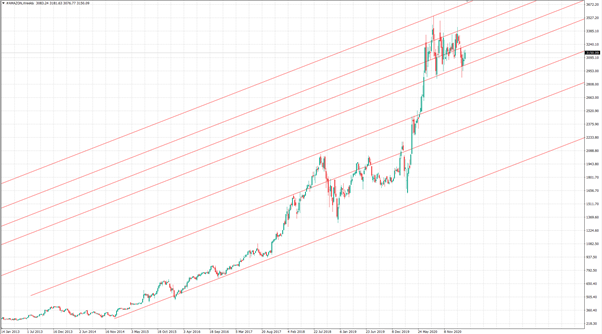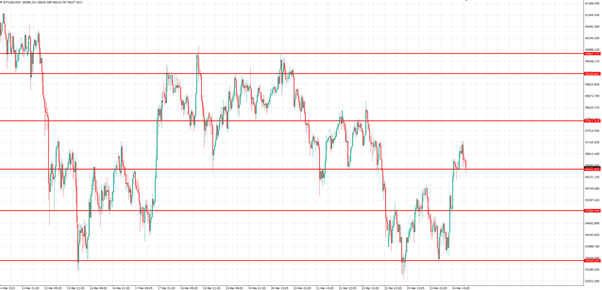Stocks are traded on the stock market. The largest stocks exchanges are London Stock Exchange, NYSE, Amex etc. Stocks trading is popular with traders due to its variety of asset choices, transparency of transactions, high asset volatility, predictability, and relatively low levels of risk.
What is CFDs on stocks
If you think that you don't have enough experience and initial deposit to start trading stocks on stock exchanges, there is a less expensive alternative then. CFD (Contract for Difference) is an OTC financial derivative that allows you to profit from changes in prices for various financial assets, be it indices, cryptocurrency, stocks, etc. The movement dynamics of the contract value for price difference completely coincides with the dynamics of the price movement of the underlying assets themselves.
CFDs are traded in the Forex - the most convenient and accessible platform for a novice trader. CFDs avoid all the disadvantages of trading stocks in the stock exchange. Their main advantage is that you can start trading even with 10 dollars in your pocket. Of course, there is nothing to do on the stock market with such a sum. Likely, you will not even be able to open an account with a broker that provides access to such markets.
Using CFDs you don't need to look for a profitable buy/sell offer every time. Trades are executed strictly at the price that you see at a given time on the chart. Any asset, in any quantity, any time of the day. Low margin rates are also considered one of the main advantages of CFD trading. For example, a full-fledged Bitcoin costs $50,000. In order to purchase a full Bitcoin CFD on your account, you only need to have 20% of its value as collateral. Expensive stocks, expensive assets, cryptocurrencies - everything becomes more affordable with CFDs.
Investors vs Traders
The main market participants can be roughly divided into two types: traders and investors. Investors buy stocks for the long term, hoping to profit from their growth in the future. Small price fluctuations inherent in any market don't really matter to investors. Investing is a long but almost win-win game because "the market is growing." Of course, there are crises and recessions, but in general, stocks grow steadily as the world economy grows. If you have enough money and patience, investing in stocks of large stable companies is your option. If you have a free deposit, investing can be a good passive source of income that doesn't require constant data tracking.
Investors, in turn, can also be divided into several categories: long-term (make investments for a period of more than several years), medium-term (from several months to a year) and short-term (up to several weeks).
Traders, on the other hand, act risky and fast. Only profit here and now is important for them. The chef trader's assistant is technical analysis. The market is difficult to predict in short periods, and even small price fluctuations can bring you both large profits and large losses. Trading is suitable for those with free time and a keen interest in finance. Traders need a constant active presence in the trading terminal, analysis of price movements and world news. Traders can be categorized based on the nature of their transactions:
- Scalping. The asset is bought and sold up to several times a minute. Literally - trades follow the price on the chart. For such a strategy, standard platforms are often not very much suitable and it is traders who often choose CFDs.
- Intraday. Transactions are made within a few hours to several days. Most traders use this particular strategy of work, transferring money from asset to asset as they receive signals. Using CFDs allows them to do this in a couple of clicks.
- Long term. Holding the same position from several days to several years. In this case, the low margin requirements for CFDs help the trader to gain large profits.
Stock trading strategies
No matter which trading style you choose depending on your goals, interests and deposit size, for sure you will need an effective trading strategy anyway. There are a lot of strategies for trading stocks. In order not to get lost in such a variety, we suggest that you first use proven tactics that have long proven their effectiveness.
Trend is your friend
You need to start analyzing any asset from the determination of the trend and its boundaries. The basic rules of technical analysis state that the existing trend will continue rather than change. An excellent example of an uptrend is blue-chip companies courses. These are stable, successful companies whose products you often use.

The above Amazon (AMZN) chart clearly shows a multi-year uptrend driven by a number of fundamental factors. The investor drew trend lines through the minimum points, having received the Support Line. The second line was drawn through the highs, which is the Resistance Line. Having thus received a trend channel, the investor drew internal lines through the points of reversals and corrections. It is not difficult to define them even for a novice trader. A trader can easily get entry and exit points from deals, having received a trend channel with correction lines. And of course, you should never trade AGAINST the trend. In this example, it would be profitable to open only buy orders.
Flat
It sometimes happens that in the short/mid-term it is impossible to identify a strongly marked movement. After all, support and resistance levels can be not only trendsetters. They can indicate the boundaries making the price of an asset changes.

The trader identifies local highs and lows as well as the points where the price often changes direction and gets a multilevel flat. The trading strategy, in this case, is to buy when prices rebound from the levels below and sell when prices rebound from the levels from above. You can try to conclude deals at intermediate values, but you can work only at the max and min levels, making more serious deals.
Now you already know how to trade currency pairs, cryptocurrencies and stocks. In the following articles in this series, we’ll talk about other popular instruments so that you can make your own decision and choose the suitable assets for your trading.











